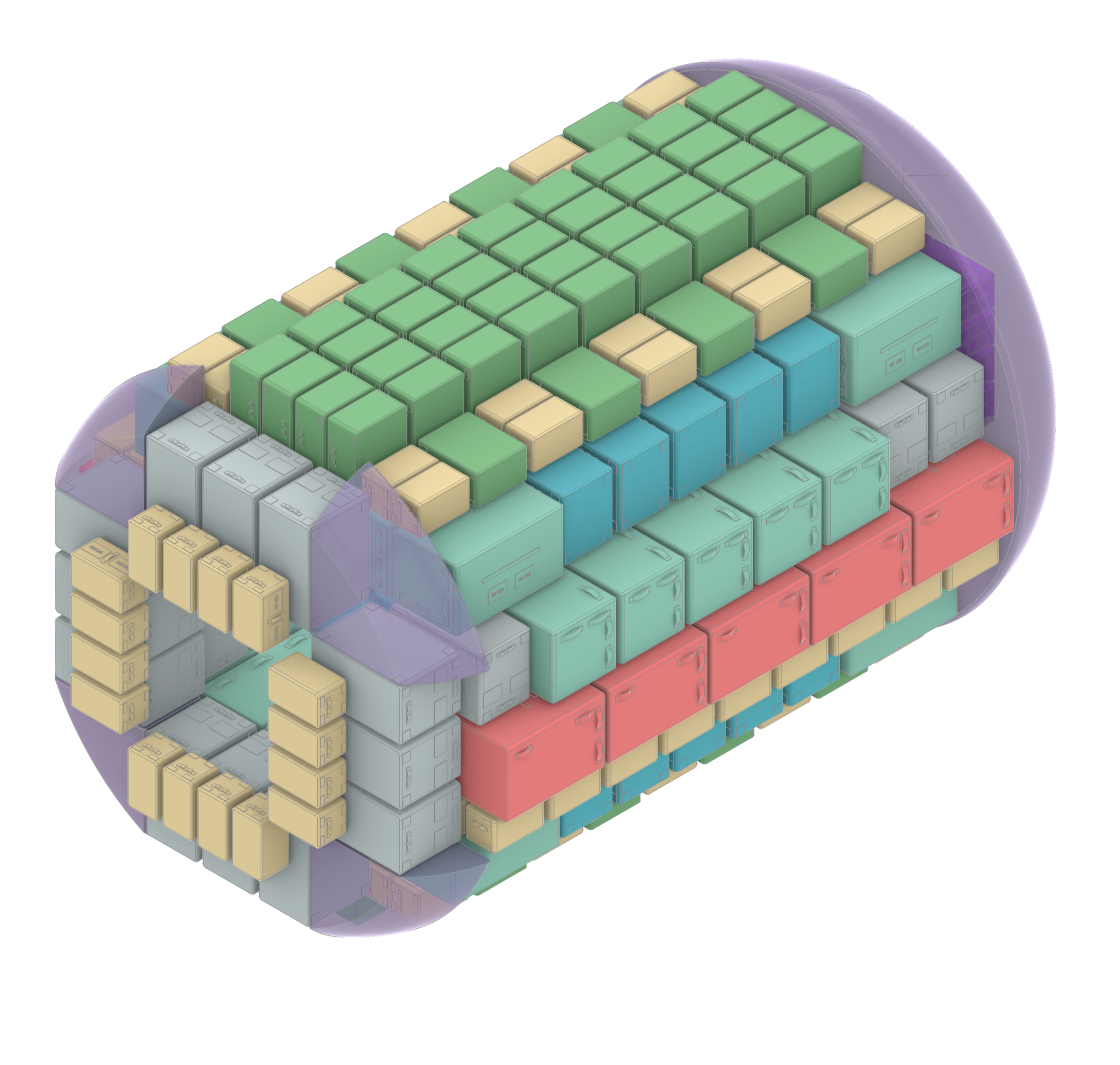
By Brayden McBee
Humans living in space have confronted the challenge of maximizing the physical space available to them. As NASA works to return astronauts to the Moon with its Artemis campaign and chart a new era of deep space exploration with Gateway, humanity's first space station in lunar orbit, being organized and space-efficient is important.
To help address the issue, the Lunar Gateway Cargo Packing and Storing Challenge invited the public to devise innovative stowage solutions for NASA's Gateway Deep Space Logistics Module that could help shape the future of space cargo delivery and deep space logistics.
The logistics module is an uncrewed cargo spacecraft that will autonomously dock to Gateway during future Artemis missions. Cargo will remain in the logistics module, and the crew will be able to access it as needed, using it as a pantry, supply storage room, and trash collection area. Along the lines of "less is more," the ideal module design maximizes volume and minimizes the storage system's mass.
Ninety challenge participants from 35 countries submitted their innovative and imaginative solutions, submitting 3D computer models of a high-reliability storage module to provide astronauts on Gateway quick access to cargo. The finalists shared a prize purse of $7,000. The winning entries are:
- First Place ($3000) QASIS–Quick Access Storage in Space by Kriso Leinfellner (Austria). This design maximizes stowage capacity, lightweight structures, and ease of use without the complexities of motors, batteries, and electronics.
- Second Place ($2000) Lunar Gateway Hambar L.M. CTPE 410 by Mustafa ÇOBANOĞLU (Turkey). This simple manual concept includes a lightweight design and considers both launch and orbit operations with a simple approach and limited maintenance.
- Third Place ($1000) Nasa Challenge: ANT Module by Marcelo Crestani (Brazil). This submission demonstrates a simple approach to cargo storage and accessibility with an electromechanical design and a novel partitioned internal rack system.
- Fourth Place ($750) Supercharged LEGO by Augustine Uyah(Nigeria). This design includes a system of modular, sliding racks and a simple, manually operated mechanism that allows access from an inner layer to an outer layer of fixed cargo.
- Fifth Place ($250) Lunar Gateway Cargo Packing and Storing (1) by Matthias Etzkorn (Germany). This concept proposes a combination of fixed racks for the outer layer and a translating rack for the inner layer.
GrabCAD administered the challenge, and the NASA Tournament Lab, part of the Prizes, Challenges, and Crowdsourcing program in the Space Technology Mission Directorate, managed the challenge. The NASA Tournament Lab facilitates crowdsourcing to address agency science and technology challenges, engaging the global community to seek new ideas and approaches that will ultimately benefit humanity.
Through Artemis, NASA will establish the foundation for long-term scientific exploration at the Moon, land the first woman, first person of color, and its first international partner astronaut on the lunar surface, and prepare for human expeditions to Mars for the benefit of all.






